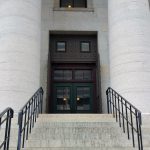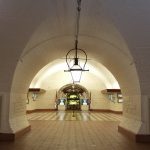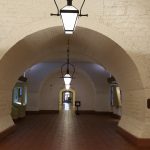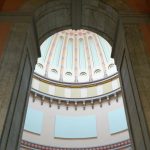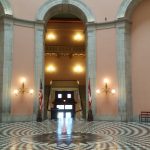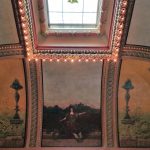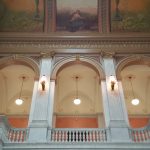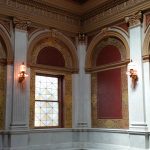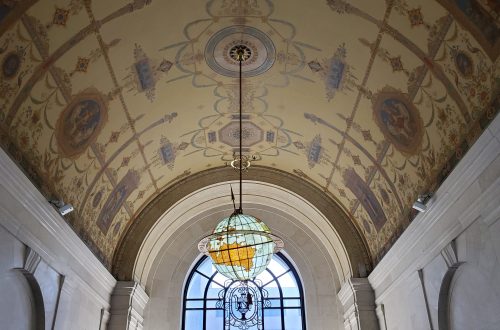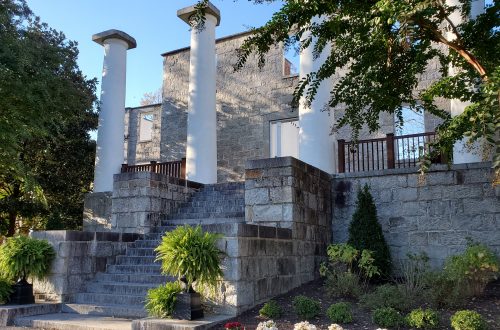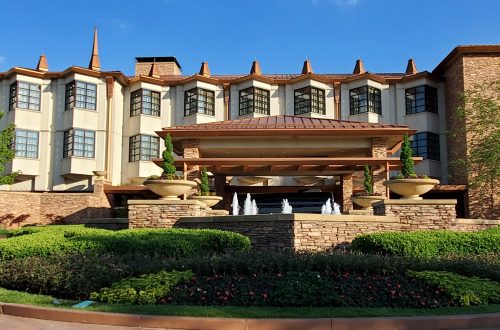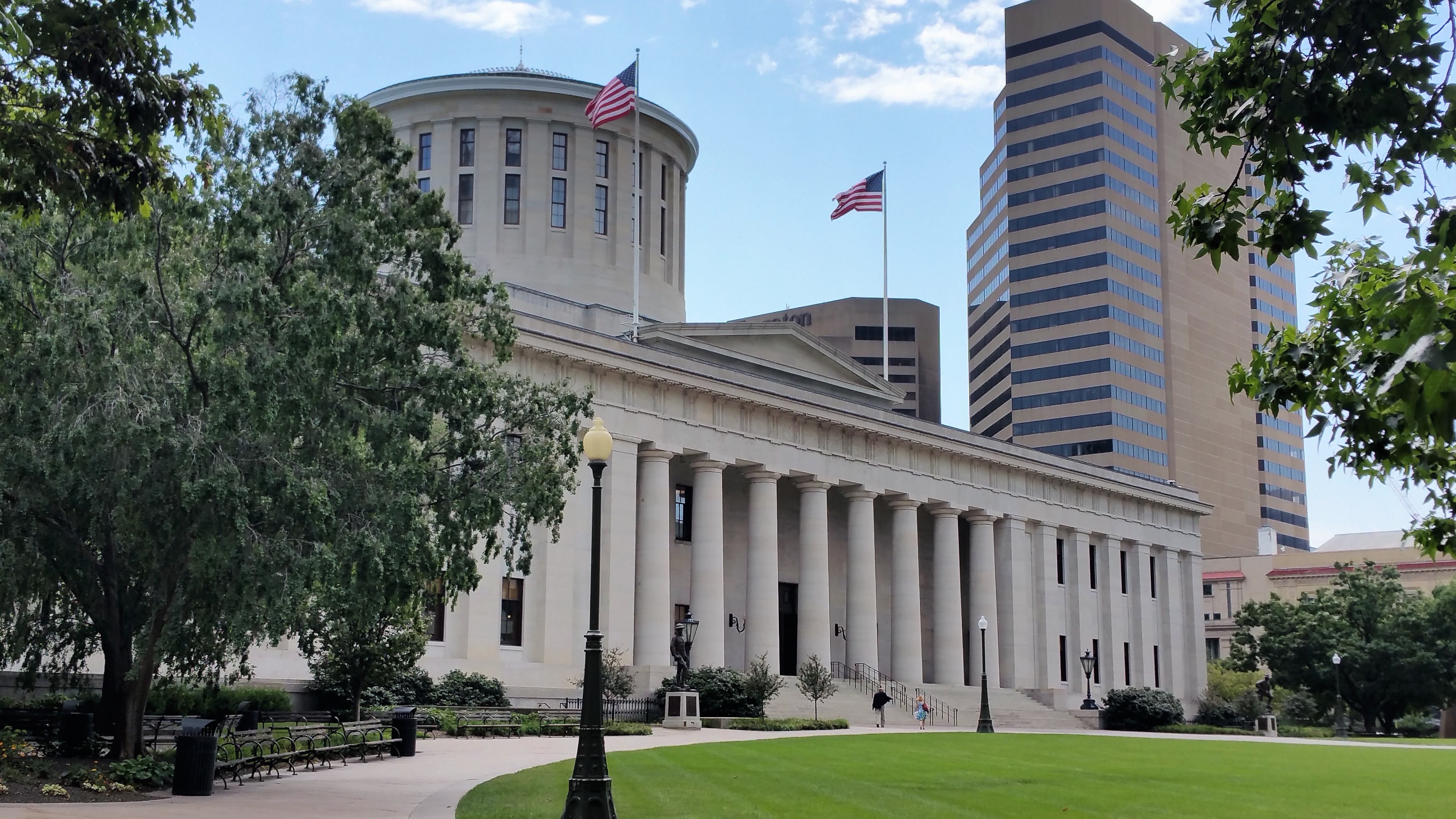
The Ohio Statehouse- Columbus, OH
The Ohio Statehouse certainly has an interesting history. Mired in drama and delays, it’s a shame reality television had not yet been invented, because it’s construction certainly had all the hallmarks of a hit show. However, in the end, a handsome Greek Revival emerged, considered by many to be one of the finest examples found in the United States.
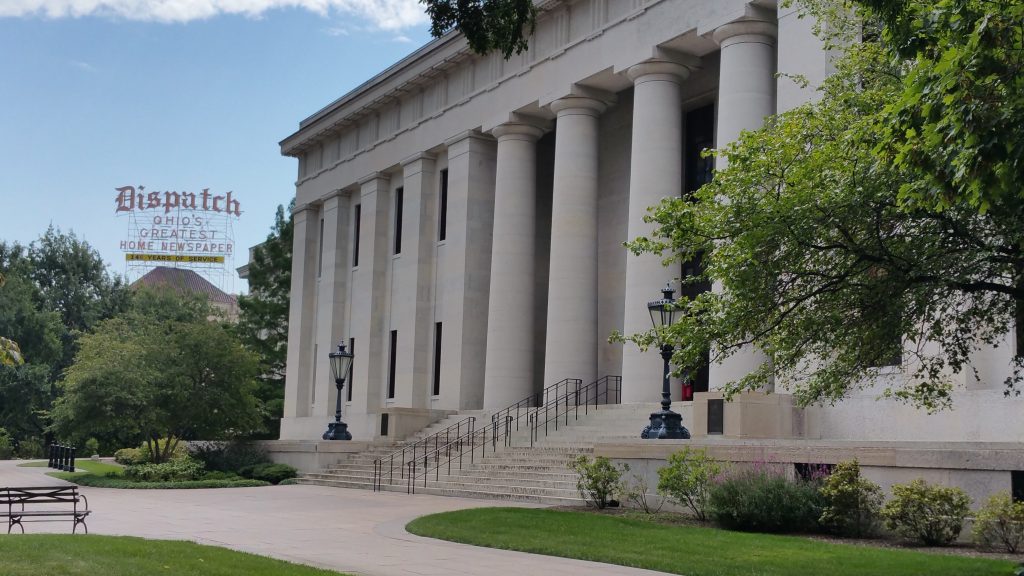
As a bit of background, Columbus was not Ohio’s first state capital. In 1803, when Ohio became a state, Columbus didn’t even exist. Rather, the distinction was held by the town of Chillicothe, former capital of the Northwest Territory. It remained there until 1810, when it briefly moved to Zanesville, as part as a legislative compromise/boondoggle. By 1812, it was back in Chillicothe temporarily, while the new centrally located capital city of Columbus was constructed.
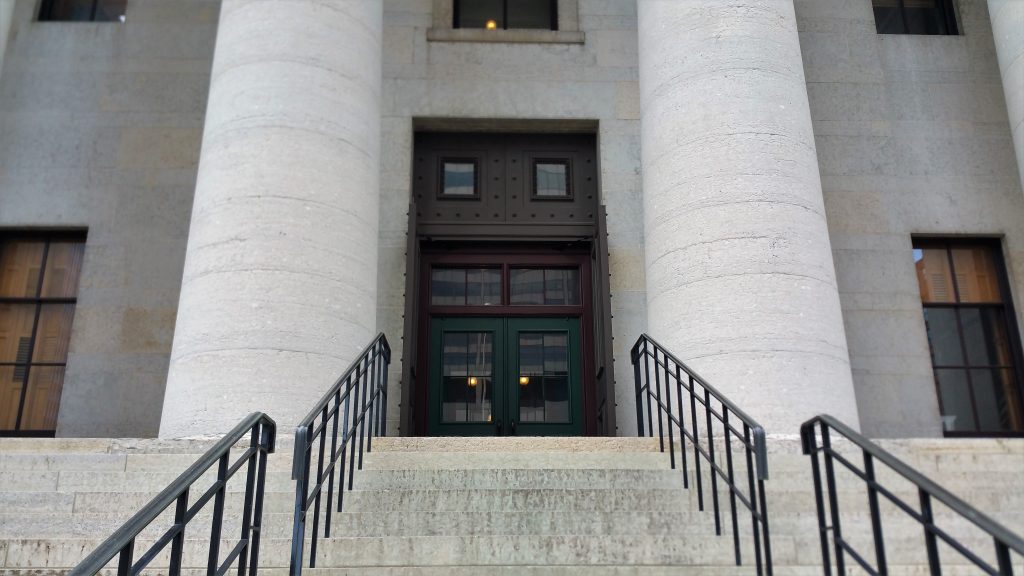
The first state capitol building in Columbus was constructed in 1814, on a donated 10 acre parcel of land. Built of brick and limestone, the two story structure boasted a mansard roof, complete with a balcony that overlooked the Scioto River. By 1838, a much larger building was needed, and a competition was launched by the government for its design. Fifty entries were received, with three winners selected; the project’s first issue arose when the selection committee could not agree on the final design. In fact, they were still undecided when the cornerstone was laid on July 4, 1839.
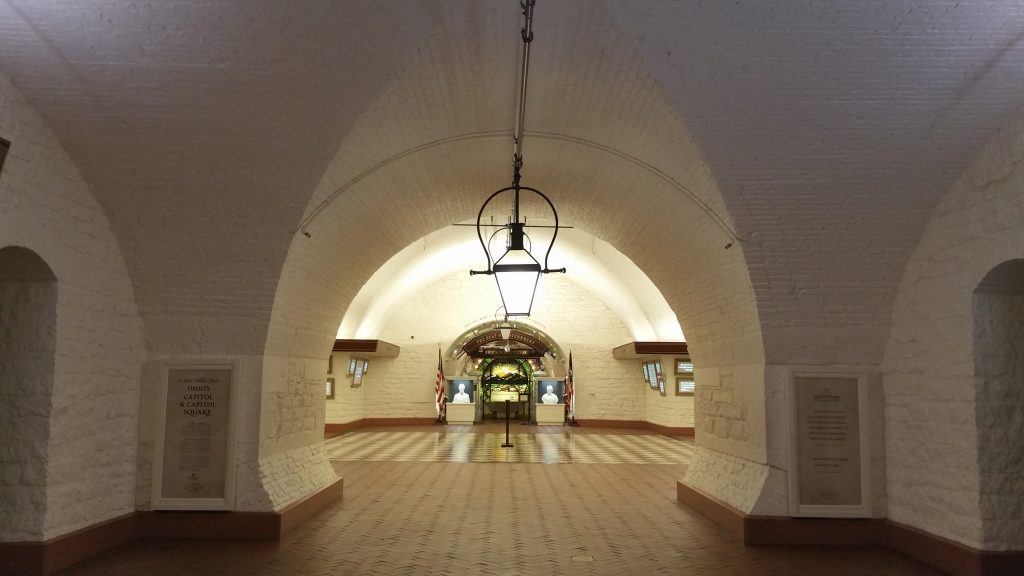
In an attempt to compromise, New York architect Alexander Jackson Davis was retained to merge the features of the winning designs. Not surprisingly, this hybrid was deemed too expensive, and scrapped. Ultimately, the first place winner, Henry Walter, was selected to oversee construction, with the final design being largely based on that of third place winner, Thomas Cole. Turns out, Cole had the favored design, but he was an outsider, from New York; he was however politically connected, which kept his design in play.
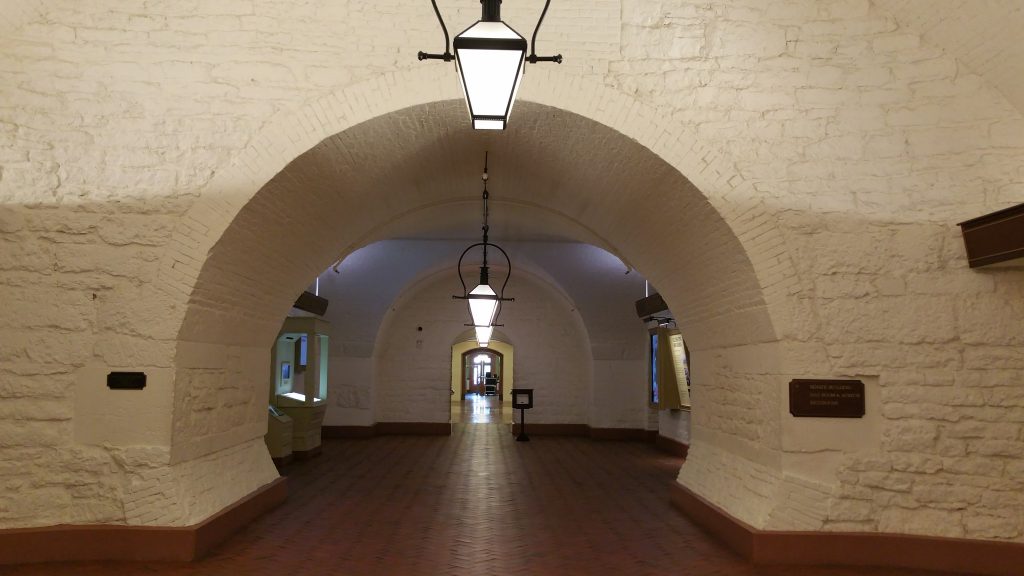
By 1840, construction had only progressed to the foundation when legislation making Columbus the official capital expired. Debates raged, with various factions lobbying to move the capital to another city. Unbelievably, the project was put on hold; the foundation was filled, and the land was used as open pasture for livestock. Construction languished until 1848, when William Russell West and J.O. Sawyer were appointed to revive the project. Shortly after, a cholera epidemic hit Columbus, and once again, construction stopped.
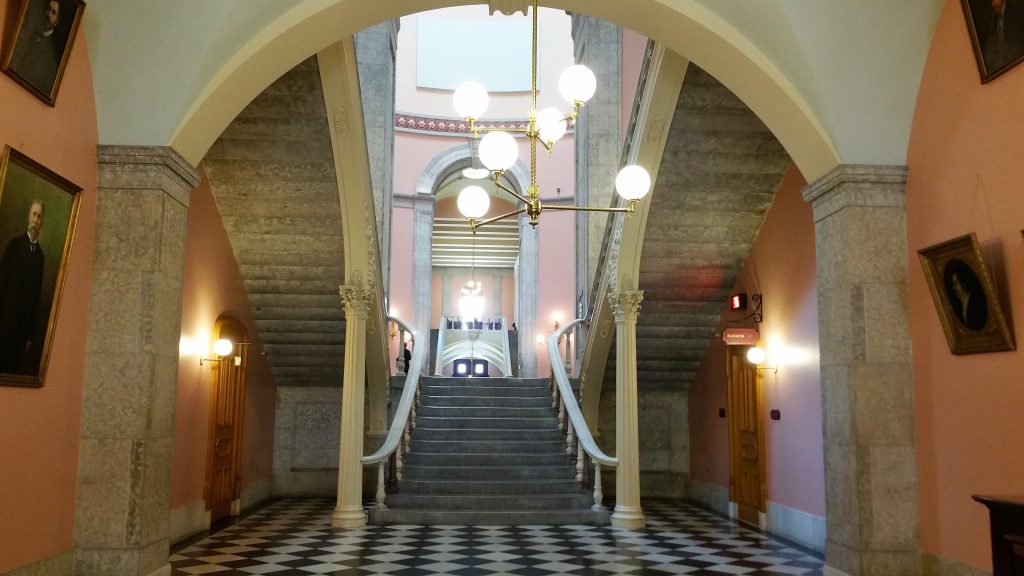
Following the outbreak, construction resumed, albeit at a leisurely rate. That changed in 1852, when the original capitol building was destroyed by fire. With a new sense of urgency, construction began in earnest. In 1854, with the locally quarried limestone exterior almost complete, Columbus architect Nathan Kelly was brought in to design and construct the building’s interiors, including a heating system, which had not previously been included in the plans. Although not complete, the Statehouse was officially opened for business on January 7, 1857, almost two decades after the start of construction.
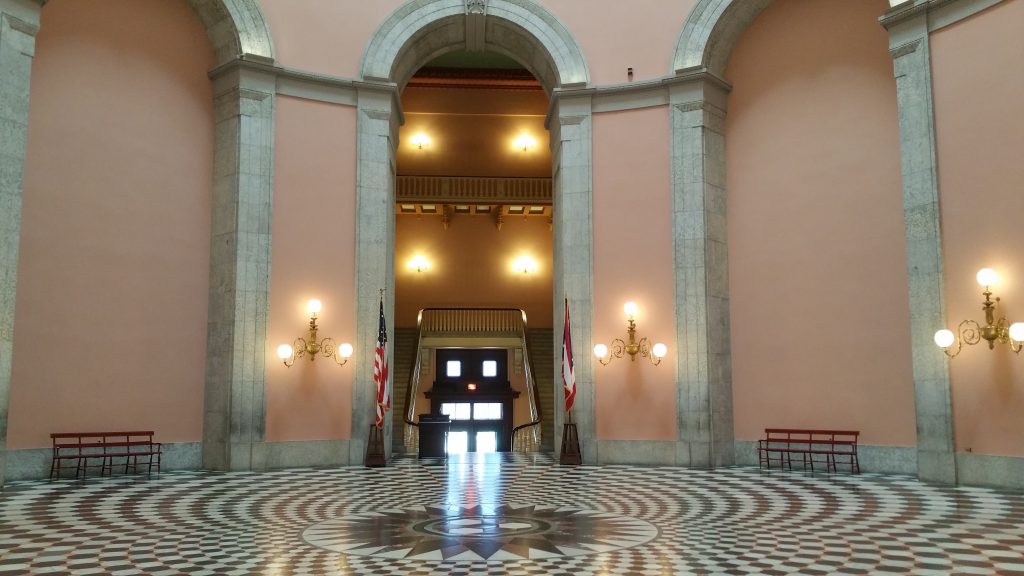
Despite designing a modern forced air ventilation system, and adding architecturally interesting details to the capitol, Kelly was fired shortly after the building opened, as they felt his additions were too expensive and lavish. They were absolutely wrong. Nevertheless, Cincinnati architect Isaiah Rogers was hired to finalize construction. He made several significant alterations to the working plans, including removing the proposed dome, making it one of only 11 capitol buildings without one in the United States. In 1861, the capitol was finally deemed complete.
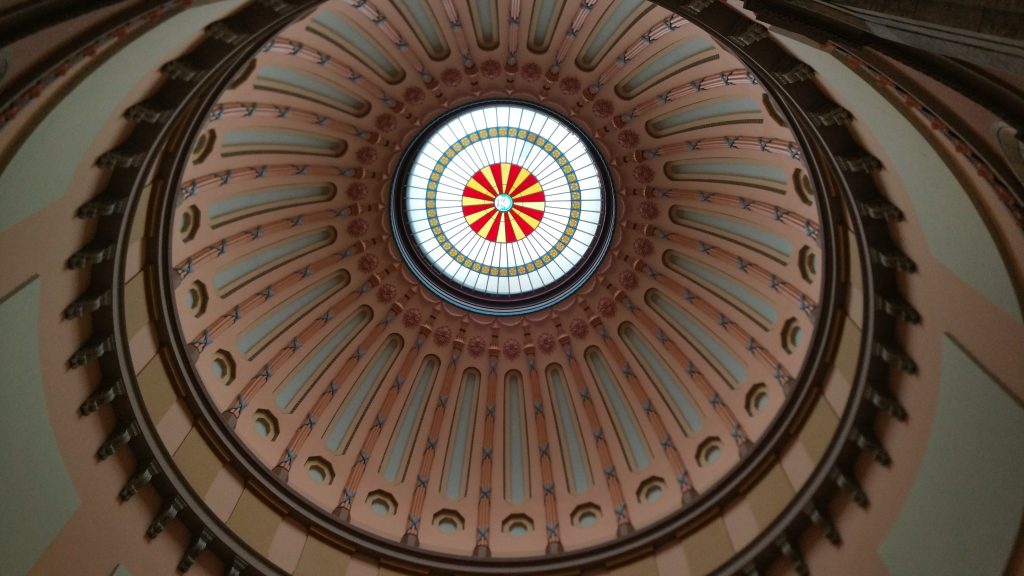
What emerged after multiple architects and two decades of construction was a stately limestone Greek Revival, featuring a central recessed porch with a colonnade of Doric columns. Above, a broad and low central pediment supports the domeless cupola. When finished, it was the largest state capitol in the United States. Just forty years later, it was far too small, and required an annex to be constructed; the two are now connected by an enclosed atrium.
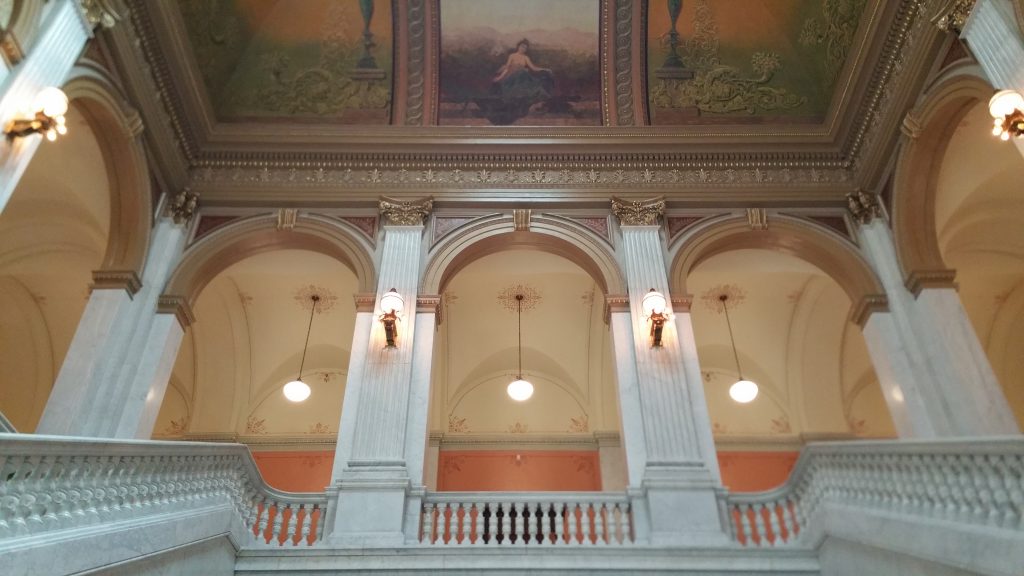
Completed in 1901, the Beaux-Arts annex housed the state Supreme Court, Attorney General, and four state agencies. Its elaborate interior reflected the prosperity of the state, and included a graceful central staircase, constructed of marble. Above, a stained glass Seal of Ohio flanked by murals depicting the Greek goddess Athena, as well as important Ohio themes.
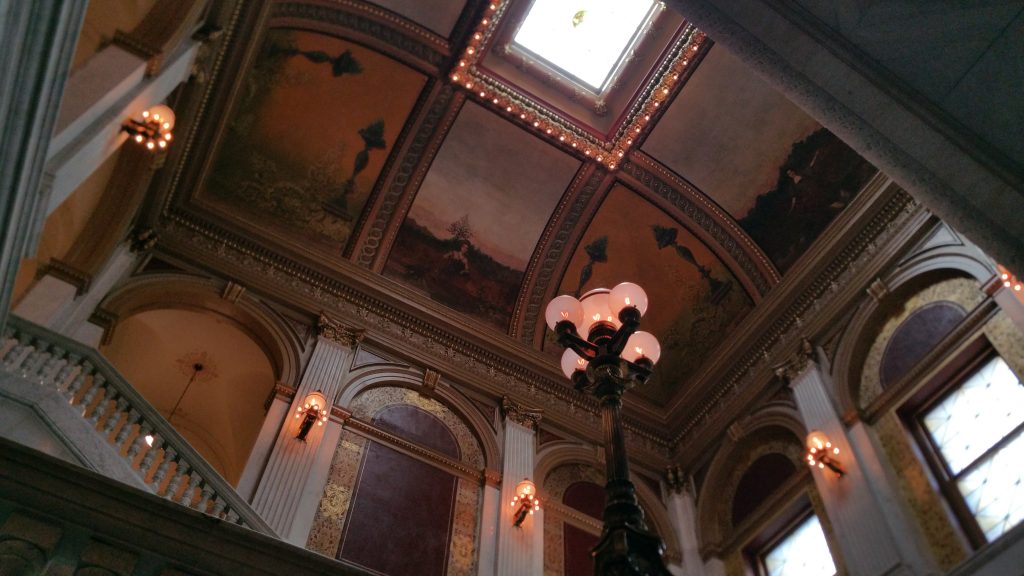
Over the years, the capitol was altered many times; rooms were added to the original light court, then later removed during an extensive 1990s restoration. The cavernous arched basement was converted from a parking garage to a museum in 2009. Although updated, the building remains in use, making it one of the oldest active capitol buildings in the United States; it is absolutely one of the most attractive as well.


